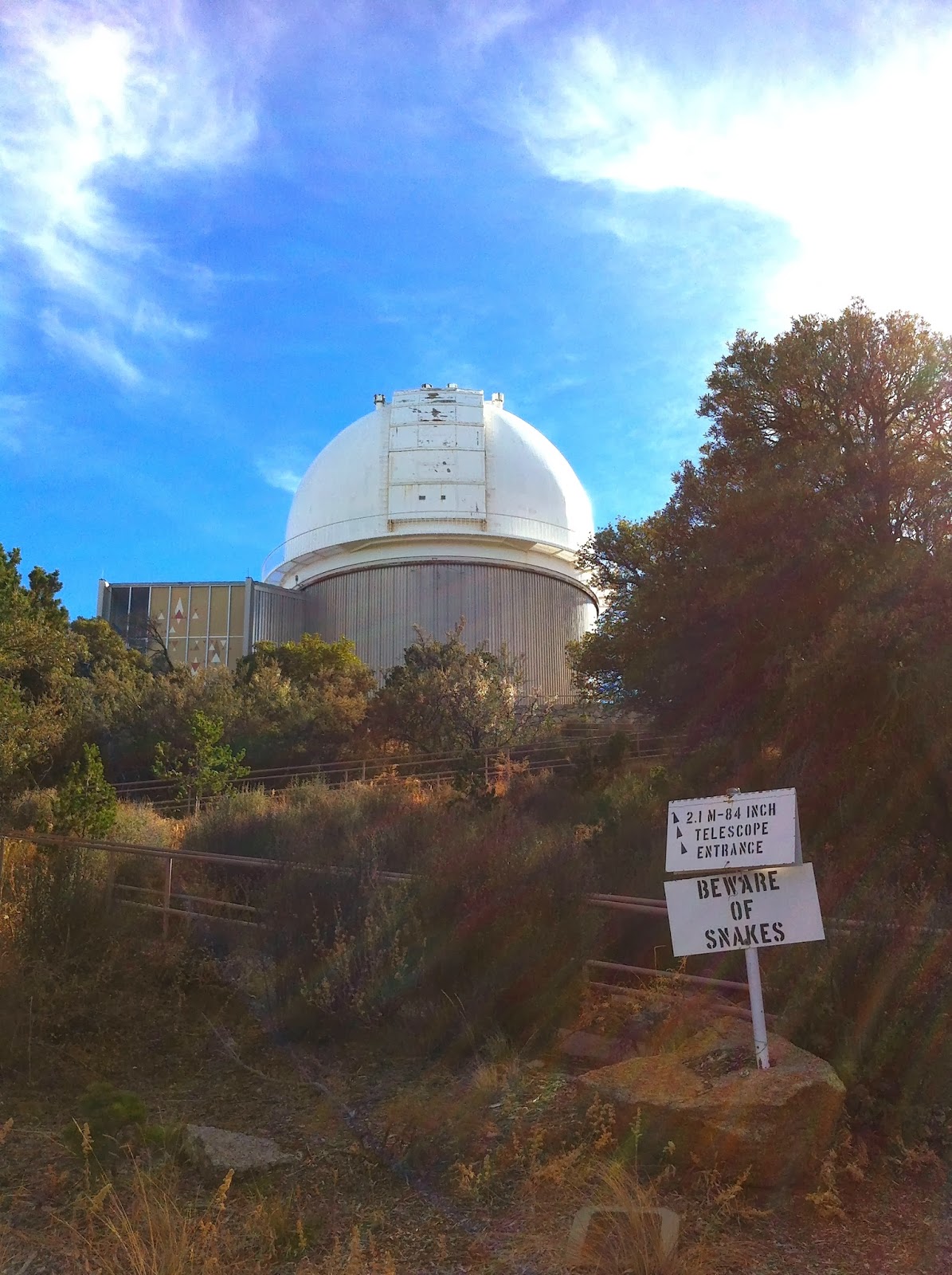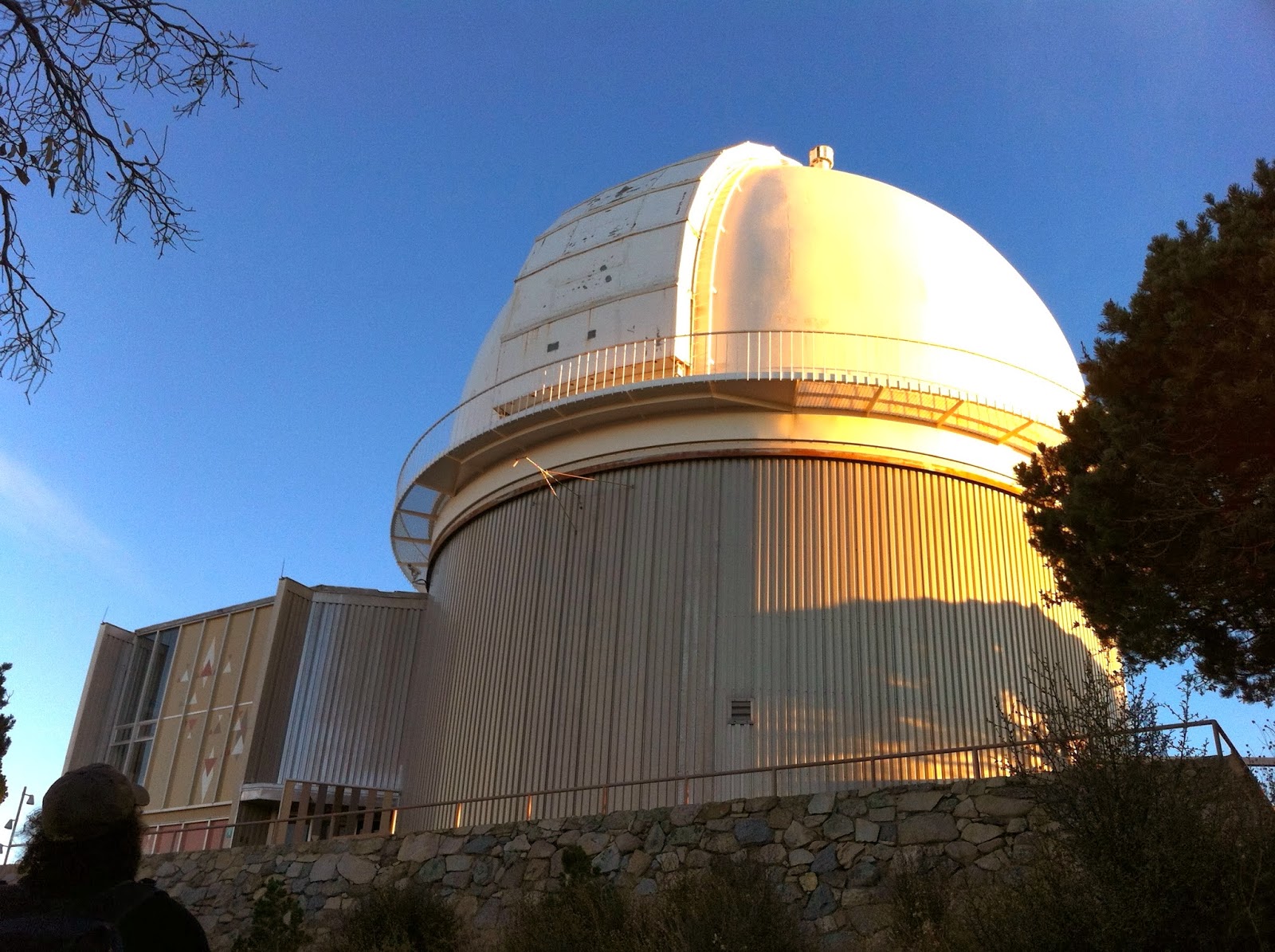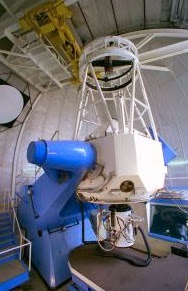 |
| Approach to 2.1 M. Dome |
Long before going to the mountain, the observer has to create an observing proposal and apply for time on a telescope. Time can be found on some telescopes by applying to an open, national program, or (if you have the right partners), can be obtained from consortia who own their own telescopes, and have a certain amount of guaranteed time for their specific observers.
The telescope needs to be a good match for what you want to do. Telescopes vary in size (light gathering power) and each has its own unique suite of instruments. Some observations can only be made with the largest and most sensitive telescopes that exist. But getting time on one of these is difficult - it is very expensive, competitive, and if you do get time, it won't be much. If you need a lot of nights, or if you have relatively bright targets, then a somewhat smaller telescope is what you need.
At least for the time being.
 |
| Base of the 2.1 Meter Telescope Dome |
I've
written in the past about the uncertain fate of the telescopes on Kitt Peak. I mentioned that
some of the most amazing and productive
astronomy telescopes on the planet may be shutting down. Several
smaller, mid-sized, and older telescopes at Kitt Peak and elsewhere are
being divested in favor of a small number of larger, newer ones. This
in itself is not unexpected, but as an educator, it is my personal
concern that changes like this will make it harder for certain groups to
get observing time - like graduate students, early career astronomers,
astronomers from non-traditional backgrounds and minority institutions,
and those with smaller programs.
 |
| 2.1 Meter Telescope |
Another complication is that, what with time at the biggest 'scopes being so competitive, they won't give time to a project that can physically be accomplished someplace smaller. If there are no such telescopes left, then a host of important observing programs just won't get time.
This is not to suggest that there will be no smaller telescopes, but open time will become very scarce. An observer will have to forge the right partnerships with other scientists involved in telescope consortia to get telescope time. And this is less likely, and more difficult for the groups I mentioned above.
Our project this week is one that requires many nights - we need 300ish, relatively bright asteroids, and can get about 50 in a decent week of observing nights. This means it will take a few years to apply for time each semester, do the observations, and iterate until having reached the necessary number of targets. The 2.1 Meter Telescope at Kitt Peak Observatory is a perfect fit, with the right instrument (CCD imager) and the right amount of light gathering power. So the first stop is here.
BUT this is one of the telescopes slated for shut down. After next semester, it will no longer be available, in spite of being one of the most important workhorse telescopes on the mountain. Hopefully it will be picked up by a consortia, but there is no guarantee that we will get time here even if it is. So it is most likely that further work will be accomplished elsewhere ...
Image Credit: All my pictures except the large 2.1 Meter Telescope shot, which is from http://www.noao.edu/outreach/kptour/2_1_m.html NOAO/AURA/NSF













